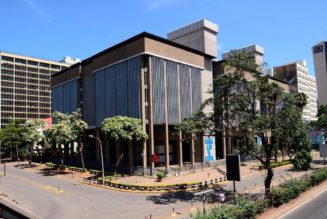Personal Finance
Emergency fund: Seven steps to building your safety net by leveraging benefits of money market fund
Tuesday September 26 2023

The importance of building an emergency fund cannot be overstated. PHOTO | SHUTTERSTOCK
In the midst of economic uncertainties, the importance of building an emergency fund cannot be overstated. This rings particularly true in Kenya’s tough economic landscape, where challenges such as inflation and fluctuating exchange rates can affect your financial stability.
However, there is a strategic solution that can enhance your efforts to create a solid financial cushion: leveraging the benefits of a money market fund.
The Kenyan economy, like many others, faces its share of economic challenges. Inflation, job uncertainties, and unexpected expenses can create financial instability for individuals and families.
During these times, the significance of having a reliable financial safety net like an emergency fund cannot be emphasised enough.
A money market fund is a valuable investment option that aligns perfectly with the goal of building an emergency fund in a challenging economy.
This type of fund primarily invests in low-risk, short-term debt securities, offering a balance between stability and returns.
During tough economic times, interest rates rise as various institutions such as; commercial banks through bank deposits and governments through treasury bills and bonds compete for the scarce available funds in the market.
In such periods, a money market fund has the opportunity to reprice higher. The reason for this is that money market funds majorly invest in short-term securities which upon maturity allow for reinvesting at higher rates consequently boosting investors’ returns while at the same time offering liquidity and security.
Here’s a step-by-step guide to building an emergency fund.
1. Assess your expenses: Begin by evaluating your monthly living expenses. Understand how much you need to cover essential costs such as housing, utilities, groceries, and transportation.
2. Set a realistic goal: Given the economic circumstances, aim to create an emergency fund equivalent to three to six months’ worth of living expenses. Set a goal that’s attainable but still provides a meaningful safety net.
3. Start small: If the thought of accumulating a significant emergency fund seems overwhelming, start with a more achievable initial target.
4. Prioritise contributions: Treat your emergency fund contributions as a priority. Allocate a portion of your income specifically for this purpose before considering discretionary spending.
5. Explore money market funds: Money market funds are designed for stability and liquidity. They provide an attractive option for individuals looking to create an emergency fund in a tough economy.
6. Open a money market fund account: Most money market funds available in Kenya have made account opening easy through online registrations.
7. Automate contributions: Most money market funds allow you to set up automated contributions to your money market fund account. Automating your savings ensures consistency.
By incorporating a money market fund into your strategy, you can enhance the stability, liquidity, and preservation of your emergency fund.
With determination, discipline, and the strategic use of a money market fund, you will be well on your way to creating a robust emergency fund.
Ms Tiba is Madison Investment Managers Managing Director.









